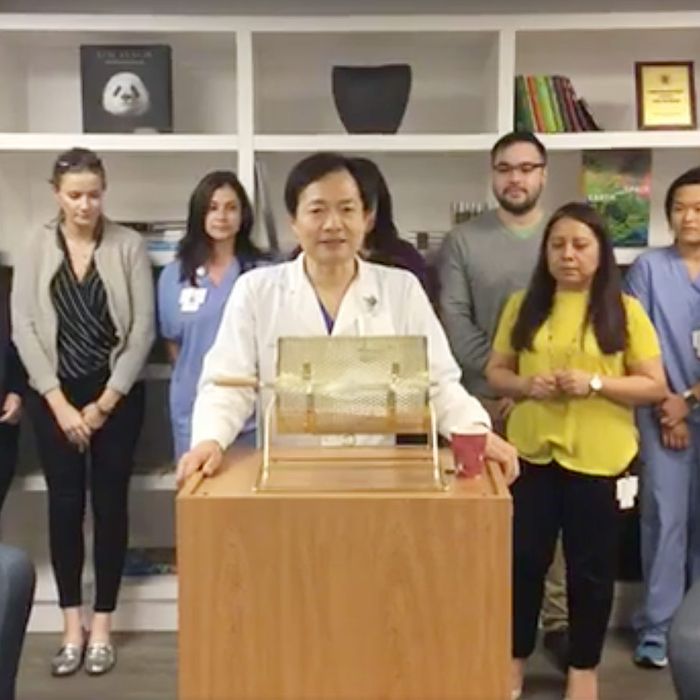Exclusive: World’s first baby born with new “3 parent” technique

It’s a boy! A five-month-old boy is the first baby to be born using a new technique that incorporates DNA from three people, New Scientist can reveal. “This is great news and a huge deal,” says Dusko Ilicat King’s College London, who wasn’t involved in the work. “It’s revolutionary.”
The controversial technique, which allows parents with rare genetic mutations to have healthy babies, has only been legally approved in the UK. But the birth of the child, whose Jordanian parents were treated by a US-based team in Mexico, should fast-forward progress around the world, say embryologists.



John Zhang and his team at the New Hope Fertility Center in New York City have been working on ways to avoid mitochondrial disease using a so-called “three-parent” technique. In theory, there are a few ways of doing this. The method approved in the UK is called pronuclear transfer and involves fertilising both the mother’s egg and a donor egg with the father’s sperm. Before the fertilised eggs start dividing into early-stage embryos, each nucleus is removed. The nucleus from the donor’s fertilised egg is discarded and replaced by that from the mother’s fertilised egg.
Meet your mitochondria: The powerful aliens that lurk within you
But this technique wasn’t appropriate for the couple – as Muslims, they were opposed to the destruction of two embryos. So Zhang took a different approach, called spindle nuclear transfer. He removed the nucleus from one of the mother’s eggs and inserted it into a donor egg that had had its own nucleus removed. The resulting egg – with nuclear DNA from the mother and mitochondrial DNA from a donor – was then fertilised with the father’s sperm.
Gene editing: A guide to the genetic revolution on our doorstep
Zhang’s team used this approach to create five embryos, only one of which developed normally. This embryo was implanted in the mother and the child was born nine months later. “It’s exciting news,” says Bert Smeets at Maastricht University in the Netherlands. The team will describe the findings at the American Society for Reproductive Medicine’s Scientific Congress in Salt Lake City in October.
Neither method has been approved in the US, so Zhang went to Mexico instead, where he says “there are no rules”. He is adamant that he made the right choice.
The team seems to have taken an ethical approach with their technique, says Sian Harding, who reviewed the ethics of the UK procedure. The team avoided destroying embryos, and used a male embryo, so that the resulting child wouldn’t pass on any inherited mitochondrial DNA. “It’s as good as or better than what we’ll do in the UK,” says Harding.
A remaining concern is safety. Last time embryologists tried to create a baby using DNA from three people was in the 1990s, when they injected mitochondrial DNA from a donor into another woman’s egg, along with sperm from her partner. Two of the fetuses developed genetic disorders, and the technique was halted by the US Food and Drug Administration. The problem may have arisen from the fetuses having mitochondria from two sources.
When Zhang and his colleagues tested the boy’s mitochondria, they found that less than 1 per cent carry the mutation and speculates it is too low to cause any problems; generally it is thought to take around 18 per cent of mitochondria to be affected before problems start. “It’s very good,” says Ilic.
Smeets agrees, but cautions that the team should monitor the child to make sure the levels stay low. There’s a chance that faulty mitochondria could be better at replicating, and gradually increase in number, he says. “We need to wait for more births, and to carefully judge them,” says Smeets.
Two women, one man and a baby
A Jordanian couple has been trying to start a family for almost 20 years. Ten years after they married, she became pregnant, but it ended in the first of four miscarriages.
In 2005, the couple gave birth to a baby girl. It was then that they discovered the probable cause of their fertility problems: a genetic mutation in the mother’s mitochondria. Their daughter was born with Leigh syndrome, which affects the brain, muscles and nerves of developing infants. Sadly, she died aged six. The couple’s second child had the same disorder, and lived for 8 months.
Using a controversial “three-parent baby” technique (see main story), the boy was born on 6 April 2016. He is showing no signs of disease.

No comments:
Post a Comment
Comments always welcome!